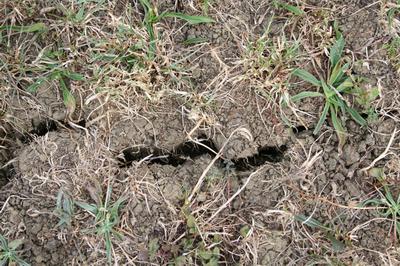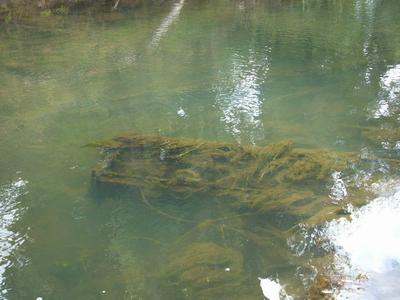Drought management
A Northland Drought Committee was established, led by Rural Support Trust Northland. The committee provided advice and support to farming families affected by the drought. Information on welfare (social and animal), finance and communications was provided via workshops, a 24/7 0800 phone line and the Regional Council's website. Agricultural recovery facilitators were available.

Photo: Dry cracked pasture.

Photo: Filamentous algae in the Awanui River
The Northland Regional Council provided water management advice, monitoring and reporting to major water users and the public and managed consent compliance.
More than 400 river and stream flow measurements were carried out, mainly related to consent compliance monitoring of 459 water takes. Other monitoring included incident investigations and mediation as well as water quality monitoring. Weekly situation reports were complied by the Northland Civil Defence Emergency Management Group (CDEMG).
District Councils were responsible for public water supply, demand management and water conservation strategies. All three District Councils – Far North, Whāngārei and Kaipara – were warned of the pending water shortage in December 2009 and encouraged to plan appropriately.
River levels in the Awanui, Tirohanga and Hātea Rivers dropped below the consented level, which is the level that the District Councils are normally required to stop taking water. The Resource Management Act allows a water shortage direction to be issued in extreme conditions where natural surface water flows are insufficient to meet the requirements of existing users – mainly for public water supplies.
The Northland Regional Council issued four water shortage directions during the drought. This allowed the District Councils to continue to take water from specific rivers to ensure public water supply.
